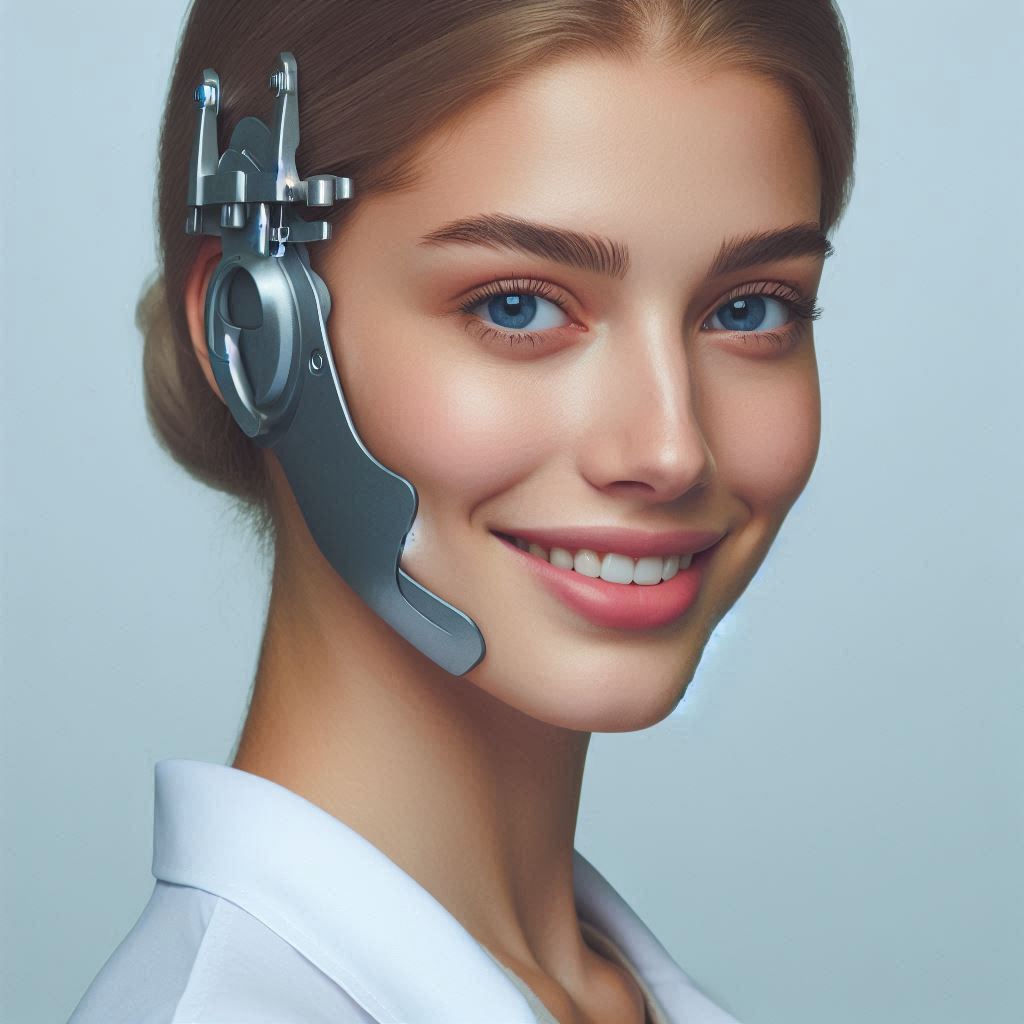Introduction
Pediatric optometry plays a vital role in safeguarding children’s eye health from an early age.
As young eyes develop, they can face various vision issues such as nearsightedness, farsightedness, astigmatism, and even conditions like lazy eye (amblyopia) or crossed eyes (strabismus).
Early detection and intervention are key to preventing long-term vision problems.
Regular eye exams are essential to detect these issues early when treatment is most effective.
Even if children don’t complain about vision problems, they may not realize they have them.
Pediatric optometrists use specialized techniques and equipment suitable for young patients to assess visual acuity, eye coordination, and overall eye health.
Parents play a crucial role in ensuring their children receive proper eye care.
They should schedule regular eye exams starting from infancy and continue through childhood.
Observing any signs of eye discomfort, squinting, frequent rubbing of eyes, or difficulty focusing can indicate a need for an eye exam.
Early intervention can prevent learning difficulties and developmental delays associated with untreated vision problems.
In essence, pediatric optometry is essential for maintaining children’s overall health and development.
By understanding the importance of regular eye exams and being proactive in monitoring their children’s eye health, parents can help ensure their children have the best possible vision and quality of life.
Importance of Regular Eye Exams
Significance of early detection and treatment of vision problems in children
Early detection and treatment of vision problems in children are crucial because they can significantly impact a child’s development.
Vision issues, if left undetected, may lead to academic difficulties, behavioral changes, and even social challenges.
Children rely heavily on vision for learning, and untreated problems can hinder their ability to read, comprehend, and interact effectively in school and social settings.
Pediatric optometrists are trained to identify subtle signs of vision issues, allowing for prompt intervention and minimizing potential long-term effects on a child’s education and overall well-being.
How regular eye exams can help prevent vision issues from affecting a child’s development
Regular eye exams play a pivotal role in preventing vision issues from negatively affecting a child’s development.
These exams not only assess visual acuity but also evaluate the health of the eyes and detect early signs of conditions such as amblyopia (lazy eye), strabismus (eye misalignment), and refractive errors (nearsightedness, farsightedness, astigmatism).
Addressing these issues early through corrective measures such as glasses, contact lenses, or vision therapy can optimize visual function and support normal development milestones like reading, writing, and engaging in sports and activities that require good vision.
Impact of undiagnosed vision problems in children
Statistics highlight the significant impact of undiagnosed vision problems on children’s academic performance and quality of life.
Transform Your Career Today
Unlock a personalized career strategy that drives real results. Get tailored advice and a roadmap designed just for you.
Start NowStudies indicate that a large percentage of school-age children with untreated vision issues struggle academically compared to their peers with normal vision.
Undiagnosed vision problems can lead to lower reading comprehension, decreased attention span, and reduced participation in classroom activities.
By addressing these issues through regular eye exams and timely treatment, parents and educators can help children reach their full potential academically and socially, ensuring they have the visual tools needed for success in school and beyond.
Read: How to Prepare for Your First Visit to an Optometrist
Signs of Vision Problems in Children
Common symptoms that may indicate a vision problem in children
It is crucial for parents to be aware of the signs that may indicate vision problems in their children.
Early detection can prevent long-term issues and support healthy vision development. Here are some common symptoms to watch out for:
- Squinting or closing one eye while reading or watching TV.
- Frequent headaches or eye strain, especially after close-up activities.
- Difficulty concentrating or focusing on tasks.
- Excessive tearing or redness in the eyes.
- Tilting the head or covering one eye to see better.
- Struggling to see objects from a distance or up close.
Tips for parents on how to observe and detect potential vision issues in their child
Parents can play a significant role in observing and detecting potential vision issues in their child. Here are some tips to help:
- Pay attention to your child’s behavior and any complaints related to their eyesight.
- Observe if your child frequently rubs their eyes or blinks excessively.
- Monitor if your child loses their place while reading or skips lines.
- Ask your child about any double vision or difficulty seeing certain colors.
- Notice if your child struggles with hand-eye coordination or depth perception.
If any signs of vision problems are noticed, it is essential to seek professional help promptly.
Vision issues can impact a child’s learning abilities, social interactions, and overall well-being.
Early intervention can prevent further complications and ensure optimal visual health.
Read: Top Universities for Orthotist/Prosthetist Programs
Types of Vision Issues in Children
Children may experience various vision problems that can affect their daily life and learning ability. Some common vision issues include:
Myopia (Nearsightedness)
Myopia is a condition where a child can see nearby objects clearly, but distant objects appear blurry.
It can be caused by genetic factors or excessive screen time.
Treatment for myopia may include wearing glasses or contact lenses to correct vision. In some cases, orthokeratology (ortho-k) or surgery may be recommended.
If left untreated, myopia can lead to headaches, eye strain, and difficulties in school activities such as reading the board or watching a presentation.
Hyperopia (Farsightedness)
Hyperopia is the opposite of myopia, where distant objects are seen clearly, but nearby objects appear blurry.
It can also be caused by genetics or developmental factors.
Children with hyperopia may need glasses or contact lenses to see clearly. In some cases, vision therapy exercises may help improve focusing ability.
Showcase Your Business Today
Reach thousands of readers actively exploring professional services. Publish your business profile and grow your audience now.
Publish NowUntreated hyperopia can lead to eye strain, fatigue, and challenges with tasks that require close-up focus, like reading or writing.
Amblyopia (Lazy Eye)
Amblyopia occurs when one eye has significantly better vision than the other, leading the brain to favor the stronger eye and neglect the weaker one.
This can result from misaligned eyes or a significant difference in refractive error between the two eyes.
Treatment for amblyopia usually involves patching the stronger eye to encourage the weaker eye to develop better vision.
Eye drops, glasses, or vision therapy may also be recommended.
If left untreated, amblyopia can impact depth perception and coordination, making activities like sports or reading challenging for the child.
It’s essential for parents to be aware of the potential vision issues their children may face and to seek professional help if they notice any symptoms or signs of vision problems.
Regular eye exams from a pediatric optometrist can help detect issues early and prevent long-term complications that may affect their child’s quality of life.
Read: Exploring the Salary Range for Optometrists in the USA

Tips for Maintaining Children’s Eye Health
Promoting good eye health in children
As a parent, it’s crucial to prioritize your child’s eye health to ensure they have optimal vision as they grow. Here are five tips for maintaining children’s eye health:
- Limit Screen Time: Encourage breaks from digital devices to reduce eye strain and potential damage.
- Encourage Outdoor Activities: Spending time outdoors can help prevent nearsightedness and promote overall eye health.
- Ensure Proper Nutrition: A diet rich in vitamins and nutrients like omega-3 fatty acids can support healthy vision development.
- Protect from UV Rays: Invest in sunglasses that block UVA and UVB rays to prevent eye damage from prolonged sun exposure.
- Avoid Blue Light Exposure: Limit exposure to blue light from screens before bedtime to promote better sleep and eye health.
Importance of Protecting Children’s Eyes
Children’s eyes are more sensitive to light than adults, making them more susceptible to damage from harmful UV rays and blue light exposure.
It’s essential to shield their eyes from these potential dangers to preserve their vision and overall eye health.
Strategies for Creating a Vision-Friendly Environment
Creating a vision-friendly environment at home and school can significantly impact your child’s eye health. Here are some strategies to consider:
- Proper Lighting: Ensure adequate lighting in study areas to prevent eye strain and promote better vision.
- Ergonomic Workstations: Adjust height and distance of desks and screens to reduce eye and neck strain.
- Regular Eye Check-ups: Schedule annual visits to a pediatric optometrist to monitor your child’s vision and address any concerns.
- Encourage Eye Exercises: Teach your child simple eye exercises to strengthen eye muscles and improve focus.
- Set Time Limits: Establish guidelines for screen time and encourage breaks to reduce eye fatigue and strain.
By following these tips and implementing strategies to promote good eye health, you can help safeguard your child’s vision and ensure they have a bright and clear future ahead.
Read: Optometry Career Outlook: Job Opportunities and Growth
How Pediatric Optometrists Can Help
When it comes to children’s eye health, pediatric optometrists play a crucial role in diagnosing and treating vision problems.
These specialized eye care professionals are trained to assess and manage the unique visual needs of young patients.
Here are some key ways pediatric optometrists can help:
Role of pediatric optometrists in diagnosing and treating vision problems in children
Pediatric optometrists are experts in identifying a wide range of eye conditions and visual issues that may affect children.
They conduct comprehensive eye exams to evaluate vision acuity, eye alignment, color vision, depth perception, and eye health.
From refractive errors like nearsightedness and farsightedness to more complex conditions such as amblyopia (lazy eye) and strabismus (crossed eyes), pediatric optometrists can diagnose and treat various vision problems.
Early detection and intervention are essential in managing vision issues and preventing long-term complications that could impact a child’s development and quality of life.
Benefits of seeking specialized care for children’s eye health
Choosing a pediatric optometrist for your child’s eye care needs offers several advantages, including expertise in pediatric eye care and a child-friendly environment that caters to young patients.
Pediatric optometrists are skilled in communicating with children of all ages, making the eye care experience less intimidating and more comfortable for young patients.
They are also knowledgeable about age-appropriate vision screenings, developmental milestones, and visual behaviors unique to children, allowing for personalized care and treatment plans.
By seeking specialized care from a pediatric optometrist, parents can ensure their child receives the most appropriate and effective treatments for their specific vision needs.
What to expect during a pediatric eye exam and treatment process
During a pediatric eye exam, the optometrist will assess your child’s visual acuity, eye coordination, and overall eye health through a series of tests and evaluations.
Eye exams for children may include vision testing, eye alignment assessment, color vision evaluation, and evaluation of eye teaming and tracking skills.
Depending on the results of the exam, the pediatric optometrist may recommend eyeglasses, vision therapy, or other treatments to address any vision problems detected.
The goal of a pediatric eye exam is to identify any vision issues early on, provide appropriate interventions, and monitor your child’s eye health as they grow and develop.
Overall, pediatric optometrists play a critical role in safeguarding children’s eye health by providing specialized care, early intervention, and personalized treatment plans tailored to each young patient’s needs.
By prioritizing regular eye exams with a pediatric optometrist, parents can ensure their child’s vision health and visual development are on the right track.
Conclusion
Pediatric optometry plays a crucial role in ensuring the overall eye health of children.
Regular eye check-ups are essential to detect any potential issues early on and prevent vision problems.
Parents should prioritize their child’s eye health by scheduling routine appointments with a pediatric optometrist.
Early intervention can help address any eye conditions and improve the child’s quality of life.
It is important for parents to be proactive and seek professional help if they notice any signs of vision problems.
By taking these steps, parents can safeguard their child’s eye health and promote optimal visual development.
Remember, healthy eyes are essential for a child’s overall well-being and success in school and other activities.
Don’t wait until it’s too late, prioritize your child’s eye health today!
Showcase Your Business Today
Reach thousands of readers actively exploring professional services. Publish your business profile and grow your audience now.
Publish Now[E-Books for Sale]
The Big Book of 500 High-Paying Jobs in America: Unlock Your Earning Potential
$19.99 • 500 High-Paying Jobs • 330 pages
Explore 500 high-paying jobs in America and learn how to boost your career, earn more, and achieve success!
See All 500 High-Paying Jobs of this E-Book
1001 Professions Without a Degree: High-Paying American Jobs You Can Start Now
$19.99 • 1001 Professions Without a Degree • 174 pages
Discover 1001 high-paying jobs without a degree! Unlock career tips, skills, and success strategies for just $19.99!




